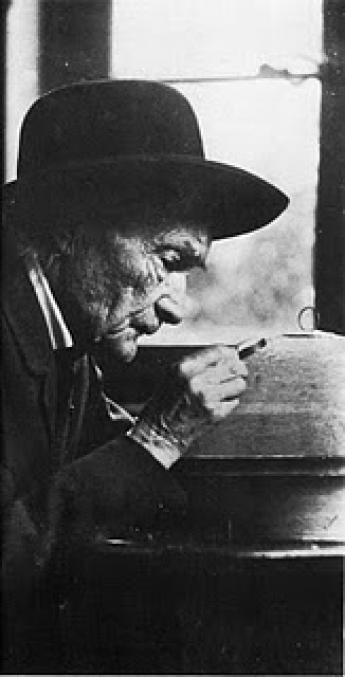Tip Antiquarian Booksellers' Association of America Lighthouse Books, ABAA
Jean-Henri Fabre: the man who loved bugs

By Michael Slicker
Jean-Henri Fabre loved to study bugs as a boy. He grew up poor in the south of France, gained a teaching certificate at age 19, and went on to become a physicist, chemist and botanist. But, he always came back to the insects. Small wonder that he became a noted entomologist. Indeed, he is considered the father of modern entomology.
Fabre was a stickler for detail and he made careful notes about his observations. But he had a gift that many other scientists lack. Fabre knew how to tell a good story. Because of that, he was a popular teacher. His writings about instects are engaging because he imbues his subjects with nearly human qualities without sacrificing scientific accuracy.
Over several years, Fabre produced a series of books called Souvenirs entomologiques, first published in 1879. There were ten series in all, the last published in 1909. In the early 20th century, famed translator, Alexander Teixeira de Mattos, undertook translation of the text into English. In 1921, Dodd, Mead and Company, published Fabre's Book of Insects, retold, from de Mattos' translation, by writer Maud Margaret Key Stawell. A copy of Fabre's Book of Insects is in the collection of rare and unusual books at Lighthouse Books, ABAA.
The illustrator of this remarkable volume deserves a special mention. He is Edward J. Detmold, an English artist who, along with this twin brother, Charles, became interested in natural history at a young age. Their artistic talent became evident early and they exhibited watercolors at the Royal Academy in London. They illustrated Rudyard Kipling's The Jungle Book.
Edward's brother committed suicide at age 24, and Edward was devastated. He continued to work, and in 1909, illustrated The Fables of Aesop. There is no evidence that Edward ever met Jean-Henri Fabre but they would have had a lot in common. Edward's love of natural history is evident in his illustrations for this book. Without being at all cartoonish, they give the bugs in this volume the personalities observed so carefully by Jean-Henri Fabre.
The collecting tip was published on the website of Lighthouse Books. It is presented here by permission of the author.

